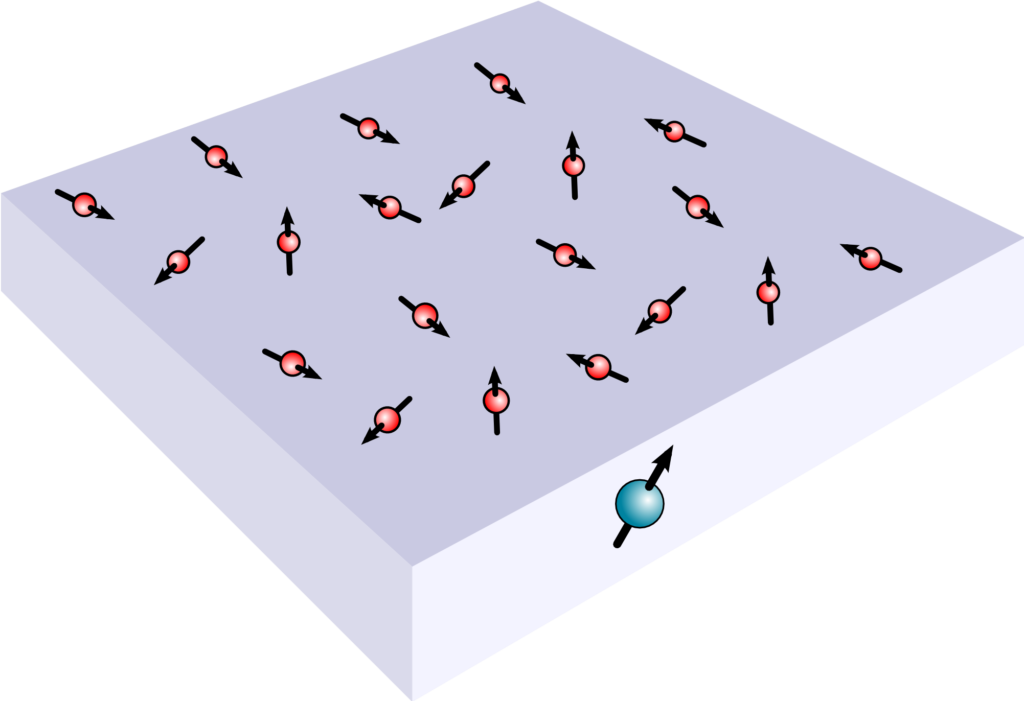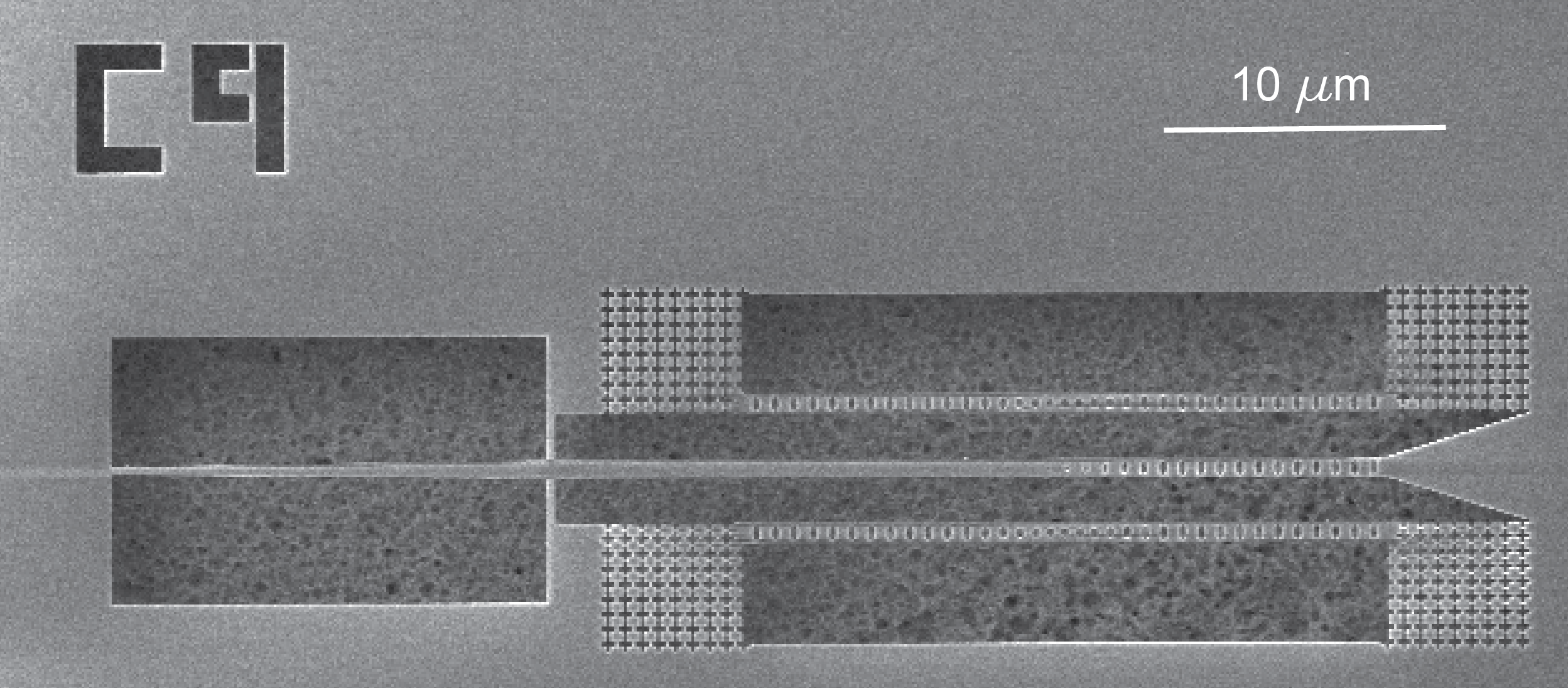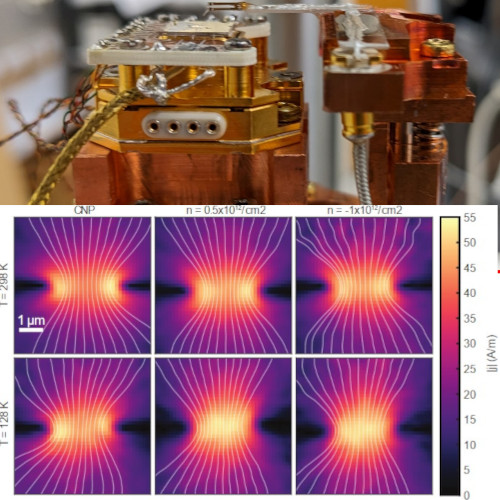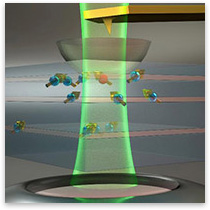The Quantum Interfaces project is a collaboration between quantum sensing (Ania Jayich), AMO (David Weld), and materials science (Kunal Mukherjee) groups that investigates fundamental and applied challenges of modern quantum technologies using a new type of quantum machine.
Single crystal diamond optomechanical crystals provide a controlled platform for introducing strain to embedded SiV and NV defect centers. An optimized mechanical resonator geometry allows the defect’s electronic spin to coherently couple to the spatially extended phonon modes of the resonator through lattice strain. This coupling can be used for long-range spin-spin interactions and quantum control of the resonator. Furthermore, the excellent optical and mechanical properties of diamonds enable optomechanical control and functionality that is difficult to achieve in other materials.
We are building a novel tool based on single spins in a diamond that promises magnetic sensing with nm-scale spatial resolution and sensitivity to single electron spins. Ultimately we hope to reach the sensitivity required to image single nuclear spins, a feat that could lead to nanoscale magnetic resonance imaging of biological systems. In addition to excellent sensitivity and spatial resolution, NV centers are attractive magnetometers due to their minimal back action (the sensor itself is only a single spin!), simple optical readout, and operation over a wide range of temperatures, from room temperature down to liquid helium temperatures.
We use chemical vapor deposition (CVD) at UCSB to grow high-quality single-crystal diamond films for nitrogen-vacancy (NV) center magnetometry and related projects involving NV centers. In the CVD process, we have incorporated process steps where the diamond is doped with nitrogen gas to gently create a few nanometer-thick diamond layers where NV centers can be formed. Having NVs within nanometers of the diamond surface is critical if they are to be used to sense weak magnetic fields from systems external to the diamond, such as single electronic and nuclear spins because the spin-spin coupling falls off rapidly with distance.




